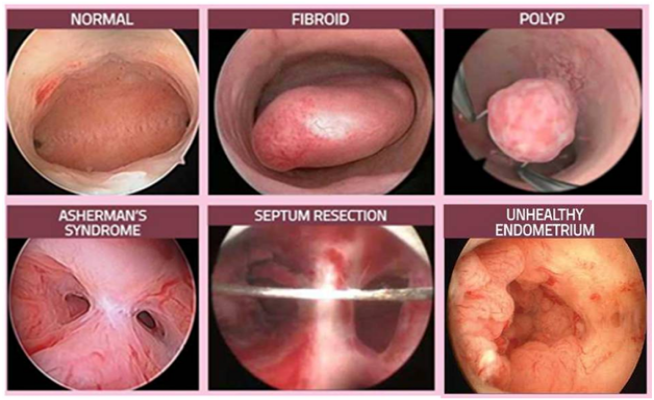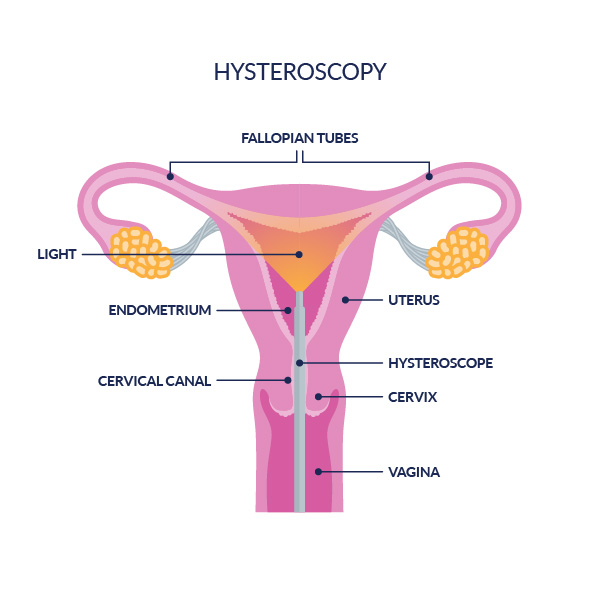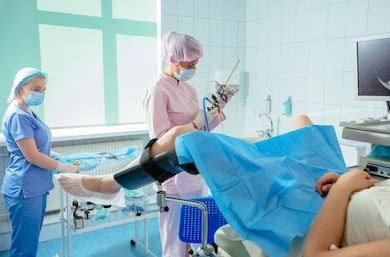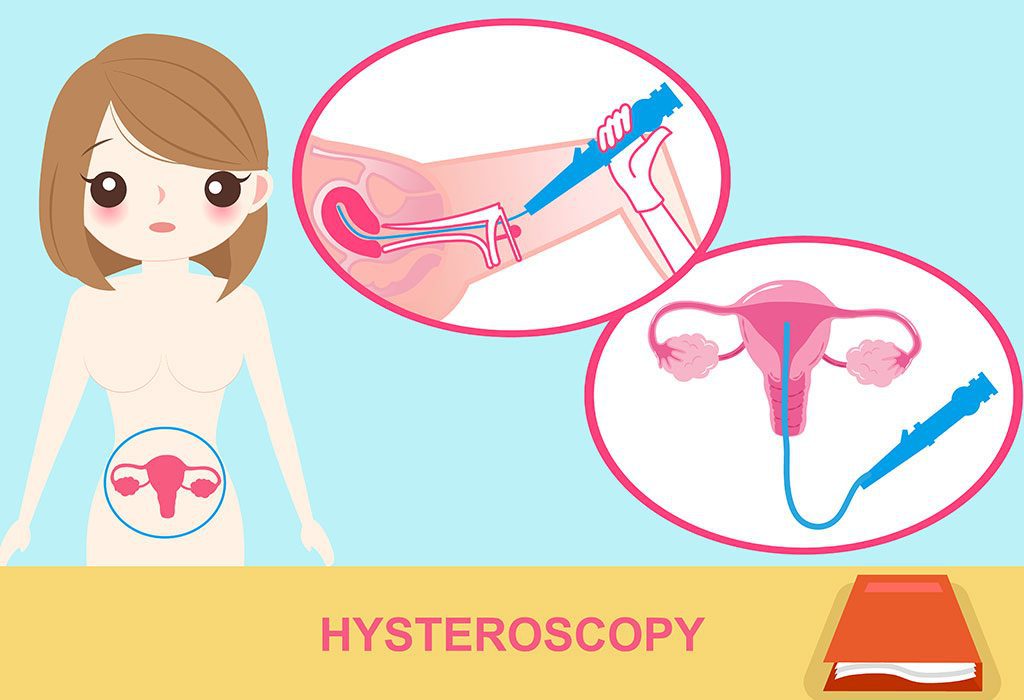
Diagnosing and treating uterine problems:
What your Doctor looks for Operative Hysteroscopy
A look inside your Uterus
Your doctor has recommended that you have Hysteroscopy. This is a procedure that lets the doctor look directly inside your uterus. Hysteroscopy is done without incisions. It causes little discomfort. The procedure can help your doctor find the cause of uterine problems. It can be used to treat some of these problems.
Why you Might Need Hysteroscopy:
Hysteroscopy is often done to find the cause of abnormal bleeding. This includes heavy or long periods, or bleeding between periods or after menopause. It may be done to find the cause of severe menstrual cramps. And it is sometimes used to check for cause of problems getting pregnant or carrying pregnancy to term.
Two types of Hysteroscopy:
Hysteroscopy can be Diagnostic Hysteroscopy or operative. Diagnostic Hysteroscopy is a look inside your uterus. If problems are found your doctor may treat them using operative Hysteroscopy.
Performing Hysteroscopy
The tools that your doctor uses to perform hysteroscopy include:
During diagnostic hysteroscopy, your doctor looks inside your uterus. If problems are found, information gathered during the procedure is used to make a treatment plan. Diagnostic hysteroscopy may be done in the doctor’s office. It can also be done in an outpatient clinic or a hospital.
Before the Procedure
You may be given a medication that helps widen the cervix. Ask your doctor whether you should take a medication such as ibuprofen an hour before your procedure. This can help lessen uterine cramps that sometimes occur. When you arrive for the procedure, you may be asked to fill out some forms. You’ll change into a gown. Then you’ll lie on an exam table with your feet in stirrups.
During the Procedure
You will be given medication called anesthesia. This keeps you free from pain. Local anesthesia may be used to numb the cervix. Or regional anesthesia may be used to numb your body from the waist down. You may be given medication (sedation) that makes you relaxed and drowsy. Or general anesthesia is used. This puts you into a state like deep sleep. Once you are comfortable, your cervix is gently widened. The hysteroscope is then inserted and the procedure done.
After the Procedure
If gas was used to expand your uterus, some may escape into your abdomen. This is harmless. But it can cause aching in your shoulders for up to a day or so. Menstrual-type cramps are common for about 24 hours. You may also have vaginal bleeding during this time. Use an absorbent pad—don’t use tampons. And don’t have sex or put anything into your vagina after the procedure for as long as your doctor instructs.
Risks and Complications These can include:
When to Call the Doctor
Call your doctor right away if you have any of these symptoms after your procedure:
What Your Doctor Looks For
The doctor looks for common problems such as fibroids, polyps, and adhesions. The procedure may also find less common problems. These include uterine cancer or hyperplasia (an overgrowth of the uterine lining). During the procedure, a small sample (biopsy) of the uterine lining may be taken. This is looked at more closely in a lab
Polyps
Polyps are single or multiple “fingers” of soft uterine tissue. They stick out from the uterine wall. They can cause abnormal bleeding.
Fibroids
A fibroid (myoma) is a round “knot” of uterine muscle. Fibroids usually grow slowly, but they can become quite large. They can cause abnormal bleeding, cramping, or fertility problems.
Adhesions or Septum Adhesions are bands of scar tissue. They bind parts of the uterine wall together. A septum is a wall of tissue that may divide the uterus into two sections. These can cause infertility or problems carrying pregnancy to term.
Cancer
Endometrial cancer is cancer of the uterine lining. It can cause bleeding problems. If cancer is suspected, a sample of the lining can be taken and examined to confirm the diagnosis.
Operative Hysteroscopy
Operative hysteroscopy may be used to treat uterine problems. In some cases, it can help you avoid having abdominal surgery or removal of your uterus (hysterectomy). The procedure is often done in a surgery center or hospital. You will likely go home the same day.
Before Surgery
The day before the hysteroscopy, you may be given a medication to help widen the cervix. The doctor may insert it. Or you may be sent home with it. This medication may cause cramping. Ask your doctor whether you can take pain reliever such as ibuprofen to help ease these cramps. If instructed, do not eat or drink after the midnight before your surgery.
During Surgery
You will be given medication to keep you free from pain. This may be local or regional anesthesia, sedation, or general anesthesia. Your cervix is widened. Then, the hysteroscope is inserted. Surgical instruments are put through the hysteroscope. These are used to perform the surgery.
After Surgery
You can likely go home once you’ve recovered from the anesthesia. Have a family member or friend ready to drive you. During the first few days, you may pass a blood clot or small piece of tissue. This is normal. Bleeding is common for a few weeks. Use absorbent pads— don’t use tampons. During this time, avoid having sex. Don’t put anything into the vagina. Also avoid strenuous activity.
Risks and Complications These can include:
When to Call the Doctor Call your doctor right away if you have any of these symptoms after your procedure:
Procedures Your Doctor May Perform
Your doctor may remove growths, such as fibroids or polyps. The lining of the uterus may be removed or destroyed. Or adhesions or a septum may be cut. Dilation and curettage (D & C) may also be done. During D & C, excess blood and tissue are gently scraped from the uterine wall.
Removing a Fibroid
During hysteroscopy, most fibroids inside the uterus can be removed. Removing fibroids can help relieve abnormal bleeding or pain.
Removing a Polyp
Most polyps on the uterine wall can be removed. This can help stop or lessen abnormal bleeding.
Ablating the Endometrium
Endometrial ablation may help stop or greatly reduce abnormal uterine bleeding. This is the removal or destruction of all uterine lining. After having this procedure, a woman is unlikely to become pregnant and will not be able to carry a pregnancy to term.
Cutting Adhesions or a Septum
During hysteroscopy, adhesions (scar tissue) or a septum can be cut. This can help restore fertility and the ability to carry a pregnancy to term.
Getting On with Your Life
To get the best results, follow your doctor’s instructions. Also keep all of your follow-up appointments. Hysteroscopy will help with the diagnosis and treatment of uterine problems. This may allow you to get on with your life and go back to doing what you enjoy.
If you have any need of these kind of procedures, Singla Mediclinic provides a comfortable and affordable place to get operated. If you have any further queries, please reach us to Dr. Rimmi Singla email [email protected] or to schedule an appointment with one of our doctors call Dr. Raman Singla : +91-9815550124, Dr. Rimmy Singla : +91-9815500448 . We would be happy to be of assistance.
 9815500448
9815500448
| Monday | 10 A.M - 07 P.M |
| Tuesday | 10 A.M - 07 P.M |
| Wednesday | 10 A.M - 07 P.M |
| Thursday | 10 A.M - 07 P.M |
| Friday | 10 A.M - 07 P.M |
| Saturday | 10 A.M - 02 P.M |
| Sunday | Closed |



